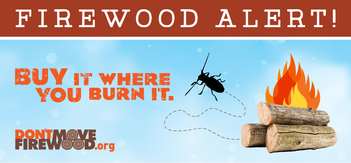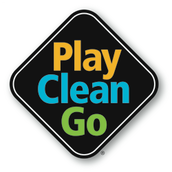Now Hiring for Seasonal Aquatic Positions
The CR-PRISM is administering a set of deliverables for the New York State Department of Environmental Conservation with financial support through the New York State Environmental Protection Fund. Watercraft Inspection Stewards are responsible for delivering conservation-based prevention, detection, management, and restoration programs designed to protect the environment from the negative impacts of invasive species. Come and join our team today and help protect our natural resources.
Click here to learn more!
The CR-PRISM is administering a set of deliverables for the New York State Department of Environmental Conservation with financial support through the New York State Environmental Protection Fund. Watercraft Inspection Stewards are responsible for delivering conservation-based prevention, detection, management, and restoration programs designed to protect the environment from the negative impacts of invasive species. Come and join our team today and help protect our natural resources.
Click here to learn more!
Need Assistance with an invasive species project?
Capital Region PRISM Crew Assistance Program Now Open
The Capital Region PRISM is seeking to assist partners with detection, monitoring, delineation, and control/response projects of invasive species and associated restoration projects. The CR-PRISM staff are available to work in collaboration with partners on new or on-going projects, free of charge. The CR-PRISM crew works from the end of May through August and consists of three trained Invasive Species Technicians.
Program Description, Application, Frequently Asked Questions
Capital Region PRISM Crew Assistance Program Now Open
The Capital Region PRISM is seeking to assist partners with detection, monitoring, delineation, and control/response projects of invasive species and associated restoration projects. The CR-PRISM staff are available to work in collaboration with partners on new or on-going projects, free of charge. The CR-PRISM crew works from the end of May through August and consists of three trained Invasive Species Technicians.
Program Description, Application, Frequently Asked Questions
Role of the PRISM
The Capital Region Partnership for Invasive Species Management (CR-PRISM) is a collaborative organization created to address the threat of invasive species. CR-PRISM is a not-for-profit quasi-governmental agency hosted by Cornell Cooperative Extension of Saratoga County. The CR-PRISM strategically operates across eleven counties and is financially supported by the Environmental Protection Fund as administered by the New York State Department of Environmental Conservation (NYS DEC). The Capital Region PRISM is one of eight Partnerships for Regional Invasive Species Management or PRISMs in New York State. New York State.
The CR-PRISM works in collaboration with partner groups to promote prevention, education, and outreach strategies, create early detection and response networks, and execute best management practices for invasive species control including post-treatment monitoring and restoration actions. In addition, we support research involving studies pertaining to the ecological impact and effective control of invasive species. Work is also conducted to help train volunteers and community scientists in these measures. The goal of these efforts is to protect conservation targets within our communities and slow the spread of invasive species. These initiatives are reflected in the CR-PRISM Strategic Plan 2023-2027.
To promote regional cohesiveness to reduce the spread and impact of invasive species, CR-PRISM collaborates with several dozen Principal and Strategic Partners, including Cooperating Affiliates, in a Partnership. Members belong to academic institutions, government agencies, municipalities, not-for-profit organizations, private preserves and parks, land trusts, conservancies, lake associations, agricultural institutions, local businesses, tribal groups, environmental groups, and community scientists. All are welcome. For more information on our Partnership please check out our Partner Invite and Acknowledgement and contact a coordinator.
The CR-PRISM works in collaboration with partner groups to promote prevention, education, and outreach strategies, create early detection and response networks, and execute best management practices for invasive species control including post-treatment monitoring and restoration actions. In addition, we support research involving studies pertaining to the ecological impact and effective control of invasive species. Work is also conducted to help train volunteers and community scientists in these measures. The goal of these efforts is to protect conservation targets within our communities and slow the spread of invasive species. These initiatives are reflected in the CR-PRISM Strategic Plan 2023-2027.
To promote regional cohesiveness to reduce the spread and impact of invasive species, CR-PRISM collaborates with several dozen Principal and Strategic Partners, including Cooperating Affiliates, in a Partnership. Members belong to academic institutions, government agencies, municipalities, not-for-profit organizations, private preserves and parks, land trusts, conservancies, lake associations, agricultural institutions, local businesses, tribal groups, environmental groups, and community scientists. All are welcome. For more information on our Partnership please check out our Partner Invite and Acknowledgement and contact a coordinator.
What are Invasive Species?
|
|
Current Species Highlights
|
|
|
Spongy Moth (Formerly known as gypsy moth) The spongy moth is a defoliating insect native to France and originally introduced in the US in 1869. Generally preferring to feed on the leaves of oak trees, they also feed on apples, maples, hickories, birches, pines and much more. Caterpillars eat young, tender leaves in the spring, and in outbreak years can lead to mass defoliation. Typically however, the leaves will regrow (albeit somewhat smaller) by midsummer allowing the tree to continue photosynthesizing as normal. For a fact sheet from the Cornell College of Agriculture and Life Sciences NYS Integrated Pest Management Program, with information about identification, control, when you should worry and more, click here (leaves website). For the New York State Department of Environmental Conservation fact sheet with information on phenology, control options, helping trees recover from outbreak and more, visit the DEC fact page here (leaves website). For the leaflet from the USDA Forest Service with detailed information on life history, natural enemies, control and bio-controls and more, click here. |
Beech Leaf Disease (BLD) Beech Leaf Disease is a relatively new pathogen of beech and kills both native and ornamental species throughout the landscape. BLD was first reported in Ohio in 2012, and has since spread into nine more U.S. States and one Canadian province. There are still many unknowns associated with this disease (including the exact mechanisms of spread), but there is an association with a foliar nematode known as Litylenchus crenatae mccannii. BLD is especially threatening in New York as beech/birch/maple is the predominant forest type of NY, and beech is one of the most common tree species in the entire state. BLD causes damage to a tree’s leaves, leading to reduced vigor and eventually leading to tree mortality. BLD can kill beech of all ages and size classes, and unlike beech bark disease (BBD), kills both native and ornamental beech species. Mortality typically occurs in 2-3 years in younger trees and can take 6-10 years in older and larger trees. You can easily survey for BLD by walking along a trail with beech trees and looking up into the canopy as you go. The symptoms of BLD (as seen in the gallery) can be visible from May until the leaves fall off (which is very late in beech) and are most easily noticed by looking up into the canopy. If you think you have seen signs of BLD:
If you have questions about your trees, email photos and location information to foresthealth@dec.ny.gov. Or you may the Forest Health Diagnostic Lab via phone at 1-866-640-0652 For more detailed information from the New York State Department of Environmental Conservation, including known locations, current control efforts, and look-alikes, click here (leaves website) |












